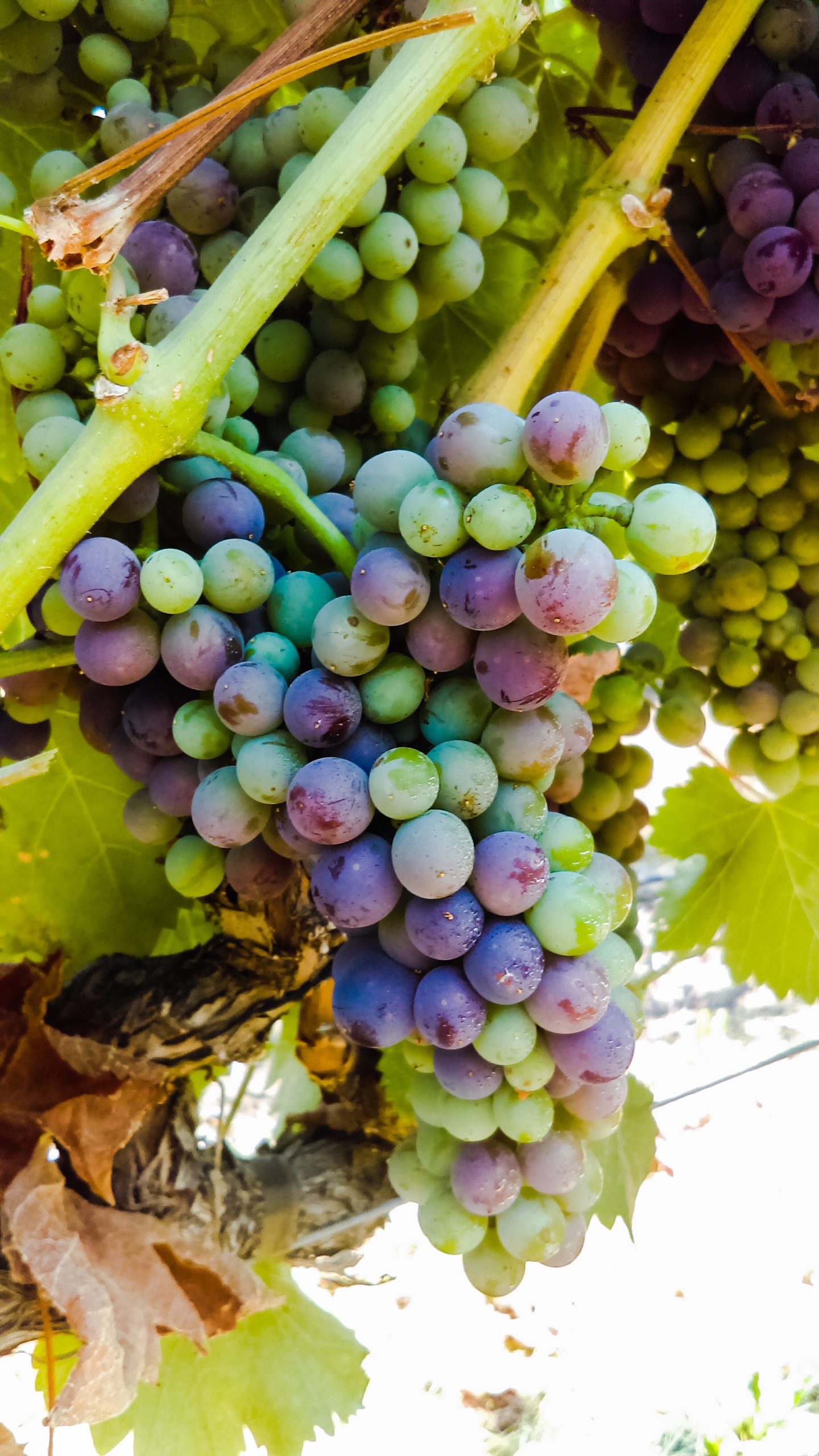Delaying Véraison

Véraison is that time in the vineyard when grapes transition from growth to ripening. In red wines, color begins to develop, and in both red and white cultivars, the skins begin to soften. A rule of thumb is that harvest follows véraison in about six weeks. It is this relationship between véraison and harvest that attracts the public’s interest.
In early July, reports circulated that véraison had arrived early in several local vineyards. Soon, the Bay Area Newsgroup was soliciting information from local winemakers regarding the 2016 harvest. Fortunately, we had nothing to contribute, as our fruit is ripening much later this year. Only recently have we seen véraison in our red cultivars, and the Ghielmetti Syrah (pictured) is not quite half way through. As of today, we have yet to see signs of véraison in our cabernet.
So, why is this a good thing to be late? I like to delay véraison because July and August are the two warmest months in Livermore Valley. Delaying véraison allows the critical stages of fruit ripening to occur in the cooler months. It is a practice being pioneered in Europe and Australia, where climate warming is changing viticulture practices.
The key in delaying véraison is to delay fruit set without compromising the vine or the quality of the fruit. This can be done by delaying winter pruning and by thinning the canopy immediately after fruit set. Deficit (stress) irrigation can also be used to delay véraison, and there are hormonal treatments that can be applied to the vines, but I am reluctant to suggest anything that comes with a material safety data sheet attached. Using natural methods, it is possible to delay véraison by two to four weeks without too much risk. This is enough to move harvest into late September and early October in warm years.
Research is being pursued to develop new root stocks and clonal combinations that can delay fruit set if the climate continues to warm. The danger in much of the world, however, is that too much delay can put ripening up against wet fall weather. This is a particular danger in much of Europe, which explains why regions like Bordeaux are slowly changing the varietal mix in some of their wines. The only alternative in these regions may be to plant warmer climate varietals.
I remain optimistic about Livermore Valley. Our east-west orientation and close proximity to the Pacific might limit the effects of a warming climate. Nevertheless, it is prudent to pay attention to developments in viticulture, especially considering the twin threats of both a drier and a warmer climate.
Now, enough said. Let’s get on to harvest 2016!


